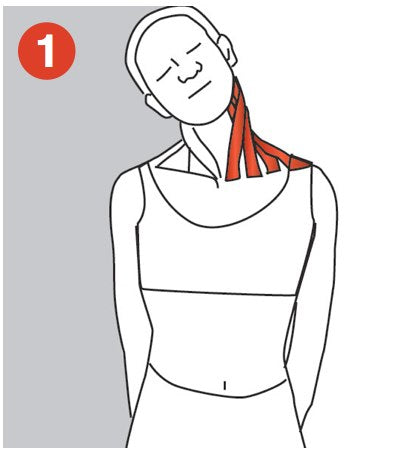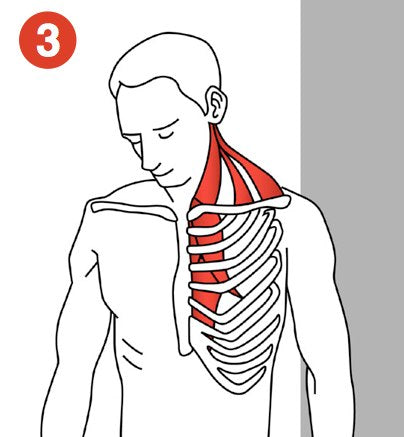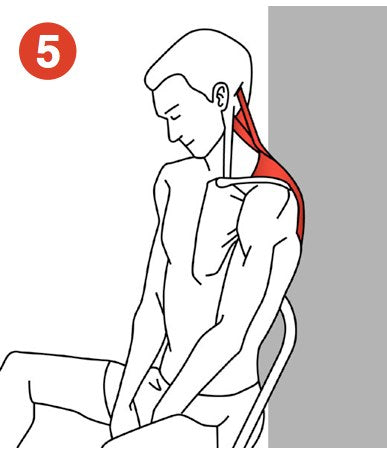http://www.nielasher.com/blogs/video-blog/76639045-trigger-point-therapy-treating-common-neck-pain
The more time spent with a forward head posture, the more likely it is that one will develop neck and shoulder problems.
Most neck pain that is not caused by whiplash or other trauma has a postural component as part of the underlying problem. Sitting atop the body, the health of the neck is subject to the curvature of the spine and the position of the head above.
Neck pain is often associated with trigger points, and these may develop as a result of postural issues or by way of over-compensation for an injury or trigger points elsewhere in the body (commonly the shoulders).
Neck pain is often associated with trigger points, and these may develop as a result of postural issues or by way of over-compensation for an injury or trigger points elsewhere in the body (commonly the shoulders).
If the alignment of the head and spine is not optimal, the neck can be predisposed to injury and/or the degenerative effects of wear and tear over time.
In cases of neck pain we are typically looking for trigger points in the scalenes, suboccipital, subscapularis, pectoralis minor, and levator scapulae muscles.
Forward Head and Shoulder Posture
The most common postural condition that contributes to the formation of trigger points and neck pain, is forward head and shoulder posture. Forward head posture is when the neck slants forward placing the head in front of the shoulders. This may lead to several problems:
In cases of neck pain we are typically looking for trigger points in the scalenes, suboccipital, subscapularis, pectoralis minor, and levator scapulae muscles.
Forward Head and Shoulder Posture
The most common postural condition that contributes to the formation of trigger points and neck pain, is forward head and shoulder posture. Forward head posture is when the neck slants forward placing the head in front of the shoulders. This may lead to several problems:
- The forward pull of the weight of the head puts undue stress on the vertebrae of the lower neck, contributing to degenerative disc disease and other degenerative neck problems.
- This posture causes the muscles of the upper back to continually overwork to counterbalance the pull of gravity on the forward head.
- This position is often accompanied by forward shoulders and a rounded upper back, which not only feeds into the neck problem but can also cause shoulder pain.
The more time spent with a forward head posture, the more likely it is that one will develop neck and shoulder problems.
Trigger Point Therapy
Treating common neck pain is “meat and potatoes” to most manual therapists. Neck pain can be quite disabling and often disturbs sleep, so we tend to see a continual stream of clients who are highly motivated to seek treatment.
Trigger point therapy may be extremely effective for most types of neck pain and may provide both short and long term relief. The trigger points themselves are easily accessible and the treatment protocols are well established.
Treating common neck pain is “meat and potatoes” to most manual therapists. Neck pain can be quite disabling and often disturbs sleep, so we tend to see a continual stream of clients who are highly motivated to seek treatment.
Trigger point therapy may be extremely effective for most types of neck pain and may provide both short and long term relief. The trigger points themselves are easily accessible and the treatment protocols are well established.
In most cases we recommend light stretching for clients to perform at home between treatments. Below you will find examples of 5 neck stretches that we regularly recommend. None of these require any equipment and so are simple to perform at home.

Technique
Look forward while keeping your head up. Slowly move your ear towards your shoulder while keeping your hands behind your back.
Muscles that you're stretching
Primary muscles: Levator scapulae. Trapezius.
Secondary muscles: Sternocleidomastoideus. Scalenus anterior, medius and posterior.
Secondary muscles: Sternocleidomastoideus. Scalenus anterior, medius and posterior.
Injury where this may help dissipate trigger points
The pain experienced in a variety of shoulder and neck conditions can be due to trigger points in the levator scapulae muscle. This muscle is often overworked when we are tense or stressed.
Note
Keep your shoulders down and your hands behind your back. Do not lift your shoulders up when you tilt your head to the side.

Technique
Stand upright while keeping your shoulders still and your head up. Slowly rotate your chin towards your shoulder.
Muscles that you're stretching
Primary muscles: Sternocleidomastoideus. Splenius capitis. Semispinalis capitis. Longissimus capitis. Secondary muscles: Levator scapulae. Trapezius.
Injury where this may help dissipate trigger points
Neck muscle strain. Whiplash (neck sprain). Cervical nerve stretch syndrome. Wryneck (acute torticollis).
Note
Keep your head up. Do not let your chin fall towards your shoulders.

Technique
Stand upright and let your chin fall forward towards your chest. Then gently lean your head to one side. Relax your shoulders and keep your hands by your side.
Muscles that you're stretching
Primary muscles: Levator scapulae. Trapezius. Rhomboids. Secondary muscles: Semispinalis capitis and cervicis. Spinalis capitis and cervicis. Longissimus capitis and cervicis. Splenius capitis and cervicis.
Injury where this may help dissipate trigger points
Neck muscle strain. Whiplash (neck sprain). Cervical nerve stretch syndrome. Wryneck (acute torticollis).
Note
Some people are more flexible in the upper back and neck than others. Do not overstretch by forcing your head down; instead, relax and let the weight of your head do the stretching for you.

Technique
Stand upright and lift your head, looking upwards as if trying to point up with your chin. Relax your shoulders and keep your hands by your side.
Muscles that you're stretching
Primary muscles: Platysma. Sternocleidomastoideus. Secondary muscles: Omohyoideus. Sternohyoideus. Sternothyroideus.
Injury where this may help dissipate trigger points
Neck muscle strain. Whiplash (neck sprain). Cervical nerve stretch syndrome. Wry neck (acute torticollis).
Note
Keep your mouth closed and your teeth together when doing this stretch.

Technique
While sitting on a chair, cross your arms over and hang on to the chair between your legs. Let your head fall forward and then lean backwards.
Muscles that you're stretching
Primary muscles: Semispinalis capitis and cervicis. Spinalis capitis and cervicis. Longissimus capitis and cervicis. Splenius capitis and cervicis. Secondary muscles: Levator scapulae. Trapezius. Rhomboids.
Injury where this may help dissipate trigger points
Neck muscle strain. Whiplash (neck sprain). Cervical nerve stretch syndrome. Wry neck (acute torticollis).
Note
Some people are more flexible in the upper back and neck than others. Do not overstretch by forcing your head down: instead, relax and let the weight of your head do the stretching for you.
Trigger points, also identified as muscle knots, are often under-diagnosed and can be a common cause of neck pain. Trigger point therapy combined with self help techniques are a great natural solution to help relieve pain, and are safe to perform. Ask your therapist about trigger points.
Trigger Point Certification for Manual Therapists and Exercise Professionals
Nationally Accredited Trigger Point Home Study Master Certification Course

Комментариев нет:
Отправить комментарий